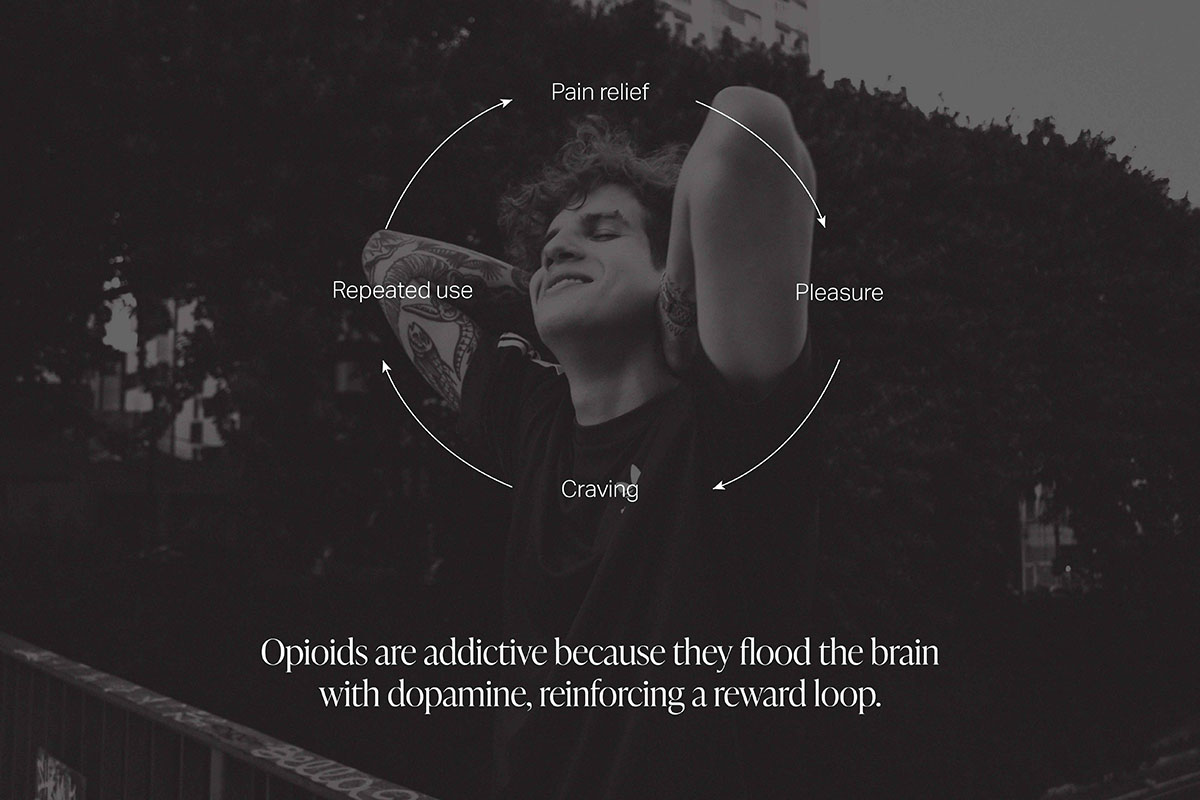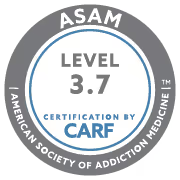Table of Contents
Opioids are a class of drugs that interact with the body’s opioid receptors to reduce pain and produce feelings of euphoria. They include prescription medications like oxycodone, hydrocodone, morphine, and fentanyl, as well as illegal substances like heroin. While effective for short-term pain management, opioids carry a high risk of tolerance, dependence, and overdose when misused.
What Are Opioids?
Opioids are compounds that bind to mu-opioid receptors in the brain and spinal cord. These receptors regulate pain, reward, and addictive behaviors. When opioids activate these receptors, they block pain signals and trigger dopamine release, leading to a sense of relief and pleasure.
Common Types of Opioids
- Prescription opioids: Oxycodone (OxyContin), Hydrocodone (Vicodin), Morphine, Codeine
- Synthetic opioids: Fentanyl, Methadone
- Illegal opioids: Heroin
All opioids work through similar mechanisms, though their potency and duration vary significantly. Fentanyl, for example, is 50 to 100 times stronger than morphine.
How Do Opioids Affect the Brain and Body?
Opioids slow down brain activity and suppress the central nervous system. This results in both therapeutic and harmful effects depending on how they are used.
Short-Term Effects
- Pain relief
- Euphoria and relaxation
- Drowsiness
- Constipation
- Reduced respiration and heart rate
These effects can be desirable in clinical settings but dangerous when misused.
Long-Term Effects
- Tolerance: More of the drug is needed to achieve the same effect
- Dependence: The brain adjusts to the drug’s presence and requires it to function
- Withdrawal: Symptoms like chills, nausea, muscle aches, and anxiety appear when use stops
- Brain changes: Long-term use impairs decision-making, memory, and emotional regulation
Opioids are also linked to hypoxia, a condition caused by slow breathing that reduces oxygen delivery to the brain—potentially causing coma, brain damage, or death.

Why Are Opioids So Addictive?
Opioids are addictive because they flood the brain with dopamine, reinforcing a reward loop. This overstimulation creates a strong desire to use the drug again, even after the pain subsides.
Addiction can form in a matter of weeks, especially with high doses or frequent use. The intense cravings and withdrawal symptoms make it difficult to stop without professional help.
To learn more about overcoming opioid dependency, visit our opioid addiction treatment program.

How Do People Misuse Opioids?
Misuse includes:
- Taking higher doses than prescribed
- Using opioids without a prescription
- Crushing pills for snorting or injecting
- Mixing with alcohol or other sedatives
These behaviors dramatically increase the risk of overdose, especially with potent opioids like fentanyl. Even a 2-milligram dose of fentanyl—equivalent to a few grains of salt—can be fatal.

Why Narcan Is Critical in Opioid Emergencies
Narcan (naloxone) is a medication that can reverse opioid overdoses within minutes by displacing the drug from opioid receptors. Its rapid action can restore breathing and consciousness, saving lives when administered quickly. Learn how it works in how does Narcan work in overdose situations.
The Risk of Mixing Opioids with Benzodiazepines
Many overdoses involve both opioids and benzodiazepines like Xanax or Valium. This combination intensifies sedation and suppresses respiration, making overdose more likely. To understand this interaction, read what are benzodiazepines and why are they prescribed.
Preventing Opioid Relapse in Recovery
Relapse is a significant risk during and after opioid detox. Triggers include stress, pain, or exposure to drug-related environments. Comprehensive recovery programs include therapy, support groups, and sometimes medication-assisted treatment (MAT). Learn how to stay on track in what does it mean to relapse and how can you prevent it.
What Role Does Methadone Play in Opioid Recovery?
Methadone is a long-acting synthetic opioid used to reduce cravings and withdrawal symptoms in people recovering from heroin or prescription opioid addiction. It is dispensed in controlled settings and helps stabilize individuals during early recovery. See what is methadone used for in addiction recovery for more details.












